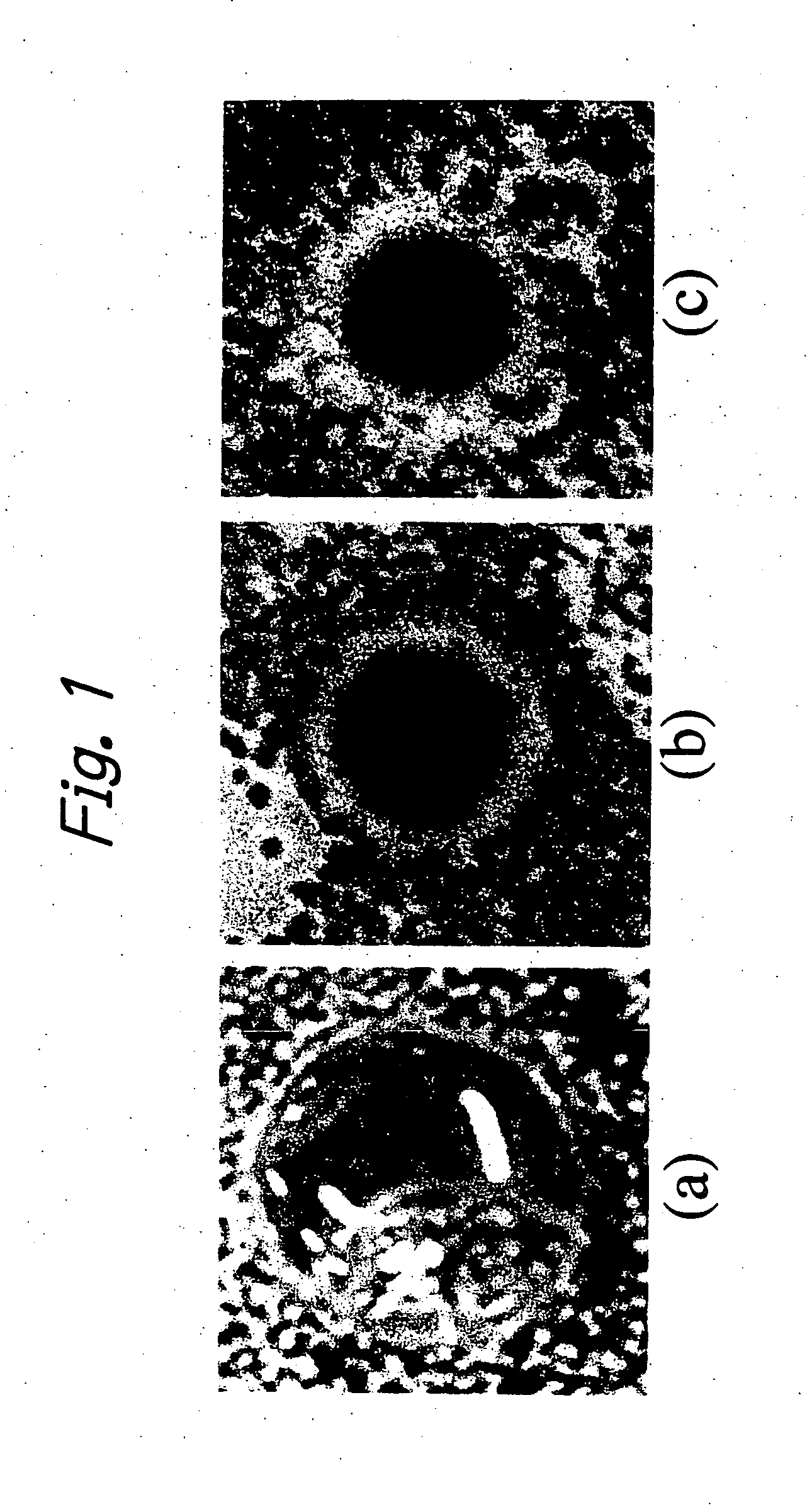Process for producing chitin derivatives and/or chitosan derivatives having a crosslinked structure
a technology of crosslinked structure and chitosan, which is applied in the direction of instruments, antibacterial agents, photomechanical apparatuses, etc., can solve problems such as difficulty in processing
- Summary
- Abstract
- Description
- Claims
- Application Information
AI Technical Summary
Problems solved by technology
Method used
Image
Examples
example 1
[0024] CM-chitin was used; it had a degree of substitution of 0.49, a molecular weight of 2.82×104 and a degree of deacetylation of 17.7%. It was kneaded well with varying volumes of purified water to make samples in paste (grease) form at concentrations of 10, 20, 30, 40 and 50%, which were irradiated with electron beams to a dose of 50 kGy. The results are shown in Table 1, from which it is clear that by irradiating the paste, a water-insoluble gel formed and crosslinking occurred. Upon immersion in a large volume of water, the crosslinked CM-chitin swelled to form a hydrogel. For crosslinking, the CM-chitin preferably has a concentration of 20˜40%.
TABLE 1Gel fractions and the degrees of swell in thecase of exposing 50 kGy of electron beams toCM-chitin (degree of substitution: 0.49)at varying concentrationsConcentration (%)of CM-chitin1020304050Gel fraction (%)3148505228Degree of swell11156342193(g H2O / 1 gdry gel
example 2
[0025] CM-chitin was used; it had a degree of substitution of 0.83, a molecular weight of 2.93×104 and a degree of deacetylation of 31.4%. It was kneaded well with varying volumes of purified water to make samples in paste (grease) form at concentrations of 10, 20, 30, 40 and 50%, which were irradiated with electron beams to a dose of 50 kGy. The results are shown in Table 2, from which it is clear that by irradiating the paste, a water-insoluble gel formed and crosslinking occurred. Upon immersion in a large volume of water, the crosslinked CM-chitin swelled to form a hydrogel. For crosslinking, the CM-chitin preferably has a concentration of 20˜40%.
TABLE 2Gel fractions and the degrees of swell in thecase of exposing 50 kGy of electron beams toCM-chitin (degree of substitution: 0.83)at varying concentrationsConcentration (%)of CM-chitin1020304050Gel fraction (%)4152596146Degree of swell148582014120(g H2O / 1 g dry gel
example 3
[0027] CM-chitosan was used; it had a degree of substitution of 0.91, a molecular weight of 3.1×104 and a degree of deacetylation of 84.0%. It was kneaded well with varying volumes of purified water to make samples in paste (grease) form at concentrations of 20, 25, 35 and 50%, which were irradiated with electron beams to a dose of 100 kGy. The results are shown in Table 3, from which it is clear that by irradiating the paste, a water-insoluble gel formed and crosslinking occurred. Upon immersion in a large volume of water, the crosslinked CM-chitin swelled to form a hydrogel. For crosslinking, the CM-chitosan preferably has a concentration of 25˜35%.
[0028] A test was conducted to evaluate the antimicrobial activity of a CM-chitosan hydrogel that was prepared by exposing electron beams to a paste of 35% CM-chitosan to a dose of 150 kGy. The sample was immersed in purified water for 48 hours to remove the sol which was a soluble component. The thus prepared CM-chitosan hydrogel had ...
PUM
| Property | Measurement | Unit |
|---|---|---|
| diameter | aaaaa | aaaaa |
| diameter | aaaaa | aaaaa |
| weight | aaaaa | aaaaa |
Abstract
Description
Claims
Application Information
 Login to View More
Login to View More - R&D
- Intellectual Property
- Life Sciences
- Materials
- Tech Scout
- Unparalleled Data Quality
- Higher Quality Content
- 60% Fewer Hallucinations
Browse by: Latest US Patents, China's latest patents, Technical Efficacy Thesaurus, Application Domain, Technology Topic, Popular Technical Reports.
© 2025 PatSnap. All rights reserved.Legal|Privacy policy|Modern Slavery Act Transparency Statement|Sitemap|About US| Contact US: help@patsnap.com

